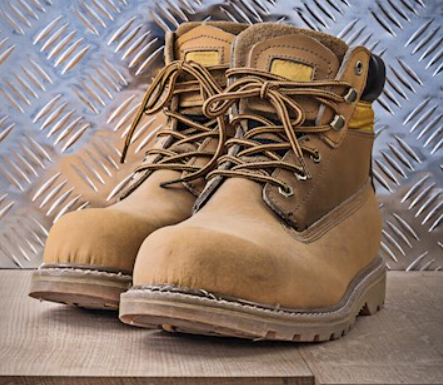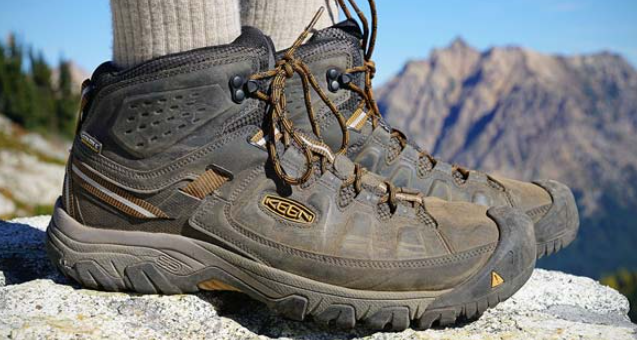Whether you’re a regular hiker or do heavy work like construction and paving, boots are eminent. However, confusion arises when you have to choose one and find that both look almost the same. No worries, we’re discussing the differences between Hiking Boots Vs Work Boots today and deciding which one’s right for you.
Simply put, there are many underlying differences between them, such as traction, durability, weight, and flexibility, and more. You’ll consider them while choosing one to have the safest work time or the best grip on the trail. Let’s break them all up and decide which boot you’re getting for your next shopping and why.
Hiking Boots Vs Work Boots: Comparison Chart
Let’s put both hiking boots and work boots side by side and do a solid comparison between them. This comparison chart will help you decide which one to go with, if you’re to select a versatile one:
About Hiking Boots
Hiking boots are built to support from the ground during outdoor activities such as hiking. Depending on the types of hiking, there are three types of these boots: Trail hiking shoes, Trail Hikers, and Mountain Boots. All of them have a few things in common, and they’d be: better bottom grip, better ankle coverage, and comfort. They’re usually made of long-lasting materials for both dry and muddy trails.
There are two main parts in hiking boots, the upper part and the sole. The upper part is usually made of full grain lather, high-end textile, or sometimes a mix of suede and lather. Besides, the sole comes with a more rigid construction and the most important part, strong grip. And it’s usually made of several layers of PVC and sometimes lather. The layers of hiking boots’ soles are: insole, midsole, and outsole.
About Work Boots
Work boots are known as Safety boots, sometimes steel-capped boots. They’re particularly designed to protect the foot from compression and falling hazards during work. Because of the difference in work type, work boots come with specialized designs for different jobs. You’ll see differences between boots for asphalt work and boots for electrical work in terms of shape, material, design, etc.
Some work boots have electrical safety, water and puncture resistance, and cold weather protection facilities. They usually have leather, nylon, and rubber upper material. Besides, the soles in work boots are usually thermo-polyurethane, EVA, or rubber. Every work boot, however, has one thing in common, and that’s the rigidity, especially in the toe. You’ll mostly find composite and steel toes with leather work boots for protection.
Difference Between Hiking Boots and Work Boots
The differences between hiking boots vs work boots rely on many factors, from shape and design to traction and weight. With a proper break-down, they’re quite different from each other, even though they’re seemingly almost similar to eyes.
So, let’s identify how these boots differ and what you must know before you for one:
Durability: Hiking Boots Vs Work Boots
Both hiking and work boots withstand harsh conditions. Still, they have differences in this term. The elementary components of these boots and their strength to withstand harsh conditions make them durable.
Hiking Boots
The hiking boots are all about ensuring safety and better grip when you’re hiking or trekking trails. Therefore, they have an average lifespan of 800-1200 miles of hiking trail in harsh conditions.
Work Boots
Work boots also ensure safety at work places and have durable components in their constructions. Depending on the type of work, decent boots offer an average lifespan of six to twelve months.
Traction: Hiking Boots Vs Work Boots
Good traction is an obligatory feature on both hiking and work boots. It prevents slippery and falling. Understanding the traction level and their difference is important to pick the right pair of boots.
Hiking Boots
Hiking shoes usually have traction designs to have a firm grip on loose or rough terrains, snow, or gravel roads. They make sure the hiker or the trekker is reaching the destination without falling off the cliff or steep hill.
Work Boots
Work boots also have heavy traction, but for a different reason, and that’s to provide better slip resistance. They usually come with resistance to oil, mud, and other slippery items that are common on job sites.
Outsole: Hiking Boots Vs Work Boots
One of the most important differences between a pair of trail boots and work boots is the outsole design and material. Although they both come with heavy soles with good traction on uneven terrain, they differ a lot here.
Hiking Boots
The manufacturers focus on grip above anything when they make a pair of hiking boots. You’ll get an excellent hardened rubber outsole with good quality hiking boots. The lug soles provide firm grip against muddy and loose terrain or gravel trekking with these boots.
Work Boots
When it comes to work boots, manufacturers usually focus on more protection alongside or instead of grip. It depends on which type of work you’re into, such as electrician, construction worker, plumbing, etc. You need a work-specific outsole, such as puncture and electric shockproof, heat and cold proof, steel shank, etc.
Can You Use Work Boots for Hiking?
Different types of boots do different jobs better, and the same principle applies to hiking and work boots. However, since both the boots have almost the same things except for some, you can compensate one with another.
So, you can use a pair of work boots for hiking and vice versa. Work boots are okay for hiking if they have rubber soles, and hiking boots are okay for work with protection. Hiking needs a firm grip to protect you from slipping on steep hills or loose terrain. And work boots must have proper toe protection with work-specific requirements such as electric protection.
Well, that rule doesn’t apply if you’re doing extreme hiking or heavy work load. You must use dedicated boots for the purpose they’re going to serve if doing it professionally. If you’re not okay with steel toe boots, try Composite Construction Boots that work for both hiking and work.
Conclusion
To wrap things up, both the Hiking Boots Vs Work Boots have their differences alongside their pros and cons. Selecting one between them can be a difficult job if you’re into both working and hiking.
Here’s what we’d suggest as a rule of thumb: If you’re doing either of them at a professional or extreme level, don’t compensate. If you’re working as an asphalt worker or an electrician, choose work boots awith the necessary specifications in them for protection. If you’re hiking in an area with water or mud, you need breathable and waterproof boots in such conditions.






